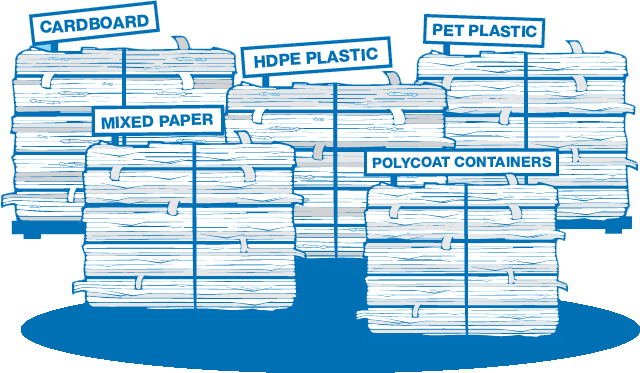The Recycling Process
Below shows the steps of the recycling process as the material travels from residents’ homes or depots through the recycling process.

Material is collected from homes and depots.
Your recycling materials are collected either from your curb, multi-family recycling location, or depots in partnership with local governments, First Nations, Métis communities, regional waste authorities or private companies. A specialized truck picks them up and takes them to the next step in the recycling process.

Material is transported to a receiving or sorting facility.
After material is collected from homes, or returned to a depot, the material is brought to a receiving and processing facility.

Material is sorted.
Your materials travel along a series of conveyor belts where sophisticated equipment like optical sorters, ballistic separators and eddy currents separate recyclables into their different material category types while also removing unwanted and un-recyclable contamination.

Material is baled with similar materials.
Then it is baled and prepared for sale to end markets.

Material is sold to end markets to be made into new packaging or products
The bales of sorted materials are sent to end markets where they’re recycled into raw materials ready to be made into new products and packaging. Plastics are shredded and pelletized, paper is pulped, metals are smelted, and glass is crushed or melted. These recycled raw materials are then sold to manufacturers to make new products and packaging.
